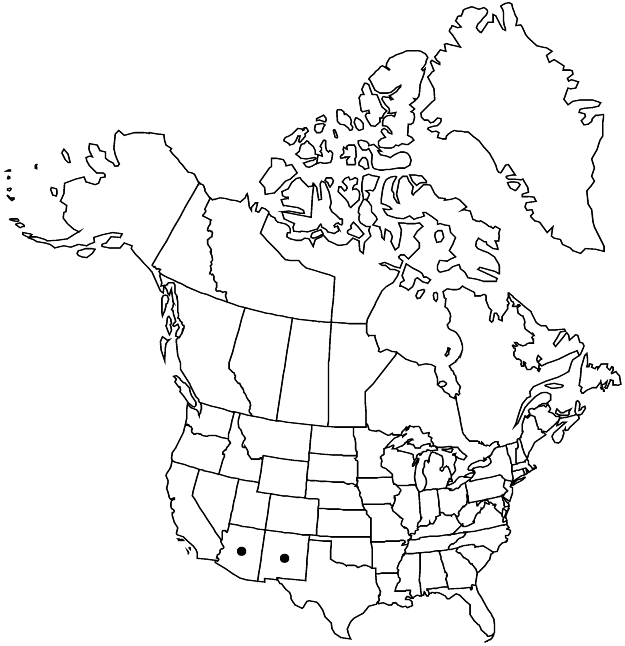Difference between revisions of "Heuchera novamexicana"
Bull. Torrey Bot. Club 17: 200. 1890 (as nova-mexicana) ,.
imported>Volume Importer |
imported>Volume Importer |
||
| Line 51: | Line 51: | ||
|publication year= | |publication year= | ||
|special status=Endemic | |special status=Endemic | ||
| − | |source xml=https:// | + | |source xml=https://bitbucket.org/aafc-mbb/fna-data-curation/src/2e0870ddd59836b60bcf96646a41e87ea5a5943a/coarse_grained_fna_xml/V8/V8_203.xml |
|genus=Heuchera | |genus=Heuchera | ||
|species=Heuchera novamexicana | |species=Heuchera novamexicana | ||
Latest revision as of 23:42, 5 November 2020
Herbs acaulescent; caudex branched. Flowering stems 30–50 cm, short or long stipitate-glandular. Leaves: petiole glabrous or long stipitate-glandular; blade reniform or rounded-cordate, shallowly 5-lobed, 2–6 cm, base cordate, lobes rounded, margins dentate, apex obtuse, surfaces long stipitate-glandular on veins abaxially, glabrous or short stipitate-glandular adaxially. Inflorescences dense. Flowers: hypanthium radially symmetric, free 1–1.8 mm, cream or yellowish green, broadly campanulate, 3–5 mm, short stipitate-glandular; sepals erect or incurved, green-tipped, equal, 0.6–1.2 mm, apex ovate; petals usually erect, white, elliptic, (not clawed), unlobed, 0.5–1 mm, margins entire; stamens included 0.5 mm; (filaments erect or incurved distally, equaling and not concealed by anthers); styles included 0.5–1 mm, 0.5–1 mm, 0.1+ mm diam. Capsules ovoid, 5.5–6.5 mm, beaks divergent, not papillose. Seeds dark brown, asymmetrically ellipsoid or convex-fusiform, 0.5 mm. 2n = 14.
Phenology: Flowering Jun.
Habitat: Shaded rocky ledges and outcrops
Elevation: 1800-2200 m
Discussion
Heuchera novamexicana occurs in the mountains of Arizona and New Mexico. Populations with glabrous petioles may be found in the Organ Mountains of New Mexico; elsewhere, long stipitate-glandular petioles are more common in the species.
The Navajo Indians took a decoction of roots of Heuchera novamexicana for internal pain. They applied a poultice of split roots to infected sores, swellings, and fractures, and used the plant as a panacea or “life medicine” (D. E. Moerman 1998).
Selected References
None.
